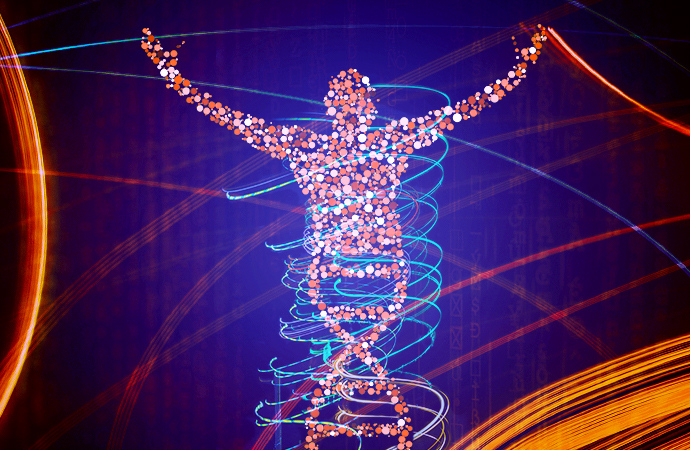Genetic bases of homosexuality
After the human genome sequence was completed, the popularity of genetic tests started growing, allowing us to dismantle who our ancestors were and screen a great variety of traits such as likelihood to experience motion sickness, preferences for salty vs. sweet food, or the risk of contracting some diseases. However, one of the most intriguing features about human behavior: sexual preference, is not yet part of the report provided by these tests. Will science one day offer a genetic test for homosexuality or “nonheterosexuality”?
Less than a century ago, homosexuality was illegal in most countries, including the US. Most societies used to think that if you were born as a girl, you were supposed to behave “as a girl” and choose a man as a sexual partner. Or, if you were born as a boy, you should have certain “boy’s habits” and choose a woman as a sexual partner.
This reasoning remains in some countries from Africa, the Middle East, the Caribbean, Oceania, and parts of Asia, where being homosexual is still illegal. As simple as it sounds, this cis-heterosexual “way of thinking” to raise children is not simple at all. There is a big difference between gender identity (what you identify as) and sexual orientation (what you are attracted to). Although both features probably have biological foundations, they do not mean the same and should be analyzed separately.
Adults who are sexually attracted to the same sex represent a minority. Last year, Jacques Balthazart, Emeritus Professor from the University of Liège, Belgium, published an article reviewing the current evidence about the biological bases of sexual preferences in animals and humans in the Journal Neuroscience & Behavioral Reviews. In this article, he stated that:
Although the heritability of homosexuality is unquestionable and probably explains around 30 % of the variance in sexual orientation, the idea of a prenatal genetic test for homosexuality is impossible since the small magnitude of effect of each single locus would make such a test essentially useless.
However, evidence shows that families with one homosexual man are more likely to have other sons that share this orientation than the general population. Scientists have found that some genes of chromosome 8 and the terminal region of chromosome X (called Xq28) influence male sexual orientation in humans.
Dr. Andra Ganna from Harvard Medical School and Massachusetts General Hospital, and collaborators, acknowledged that sexual preferences should not be considered binary (exclusively homosexual/exclusively or heterosexual). They have preferred the therm non-heterosexual for including people that occasionally have had sexual behaviors with partners of the same sex.
Based on Genome-Wide Association Study (GWAS), the scientists conclude that:
Same-sex sexual behavior is influenced by not one or a few genes but many. Overlap with genetic influences on other traits provides insights into the underlying biology of same-sex sexual behavior, and analysis of different aspects of sexual preference underscore its complexity and call into question the validity of bipolar continuum measures such as the Kinsey scale. Nevertheless, many uncertainties remain to be explored, including how sociocultural influences on sexual preference might interact with genetic influences.
They found that two loci1 were associated with non-heterosexual behaviors in both sexes. But, they also identified two loci only in men and a fifth only in women, suggesting that non-heterosexual behavior could be associated with different genes in men and women. However, there is a lot of heterogeneity. In addition to genetic markers, hormones and social factors are involved in the attraction for the same sex.
- Locus, singular, or loci, plural, refers to the position of a gene or genetic sequence in a specific chromosome.
Hormones and sexual orientation
Testosterone has been consistently associated with men and masculinity. Still, both women and men were exposed to this molecule before birth, and they produce it later in life by themselves. The presence of testosterone in girls’ and boys’ embryos modifies morphological, physiological, and behavioral traits promoting masculinization. But, his role in adult-sexual orientation is more complex.
Higher prenatal testosterone levels in male mice, for example, results in male-typical behavior and promotes homosexuality. This explains, for example, why some trans-woman (babies assigned as male at birth, but with gender identity as a woman) received less testosterone as embryos. As a consequence, they were less masculinized and identified as women.
On the other hand, sexual orientation is harder to predict based on testosterone levels exclusively because hormones interact with genes, and genes interact with each other, changing their expression patterns. In conclusion, the link between genes, human biochemistry, and sexual orientation is very complex and can not be simplified. Non-heterosexuality, as probably most human behaviors, is also affected by the social environment. However, parents’ dysfunctional relationships, sexual recruitment by homosexual adults, or having homosexual adoptive parents—some socially accepted “causes”—lack strong evidence.
Evidence shows that instead of being obsessed with the genetic determinism of homosexuality, sexual preferences result from the combination of genetic, hormonal, social, and environmental experiences. We should rule out the Nature-Nurture dichotomy in the mechanisms that control not only sexual preference but also the development of an adult gender identity in humans.
Sexual preferences as a gradient
To better understand human and animal behavior, the current approach also needs to be updated to consider sexual preferences as a gradient and the actual diversity of possibilities. The same should apply to gender identity and sex. It is necessary that researchers stop considering sexual preferences as heterosexual/homosexual and gender as male/female, as most of the studies have been done, especially those performed in the late 1990s and early 2000s.
Nature has demonstrated that the lifetime binary classification of female vs. male does not apply to all organisms. Clownfishes and black sea bass, for instance, used to change sex during their development. Fungi are also known for having at least six modes of sexual reproduction where the conventional female and male sex do not apply. This demonstrates that nature is not binary and recognizes that gender transitions and non-heterosexuality are not aberrant at all, and they also occur in other species besides humans.
If science acknowledges better the diversity of sexual orientations and gender identity in humans, it could significantly influence political decisions and help to create more inclusive policies, especially in those countries where homosexuality is still illegal.
References
- Balthazart, J. (2020). Sexual partner preference in animals and humans. Neuroscience & Biobehavioral Reviews, 115, 34-47.
- Ganna, A., Verweij, K.J., Nivard, M.G., Maier, R., Wedow, R., Busch, A.S., Abdellaoui, A., Guo, S., Sathirapongsasuti, J.F., Lichtenstein, P. and Lundström, S. (2019). Large-scale GWAS reveals insights into the genetic architecture of same-sex sexual behavior. Science, 365(6456).
- Sanders, A. R., Martin, E. R., Beecham, G. W., Guo, S., Dawood, K., Rieger, G., … & Bailey, J. M. (2015). Genome-wide scan demonstrates significant linkage for male sexual orientation. Psychological medicine, 45(7), 1379-1388.
- Bailey, J. M., Vasey, P. L., Diamond, L. M., Breedlove, S. M., Vilain, E., & Epprecht, M. (2016). Sexual orientation, controversy, and science. Psychological Science in the Public Interest, 17(2), 45-101.
- Ni, M., Feretzaki, M., Sun, S., Wang, X., & Heitman, J. (2011). Sex in fungi. Annual review of genetics, 45, 405-430.
Written by Mabel Gonzalez and Paulie Amanita Calderon-Cifuentes.


Illustration by Dana Dumea






[…] post Do genes determine sexual preferences? first appeared on United Academics […]